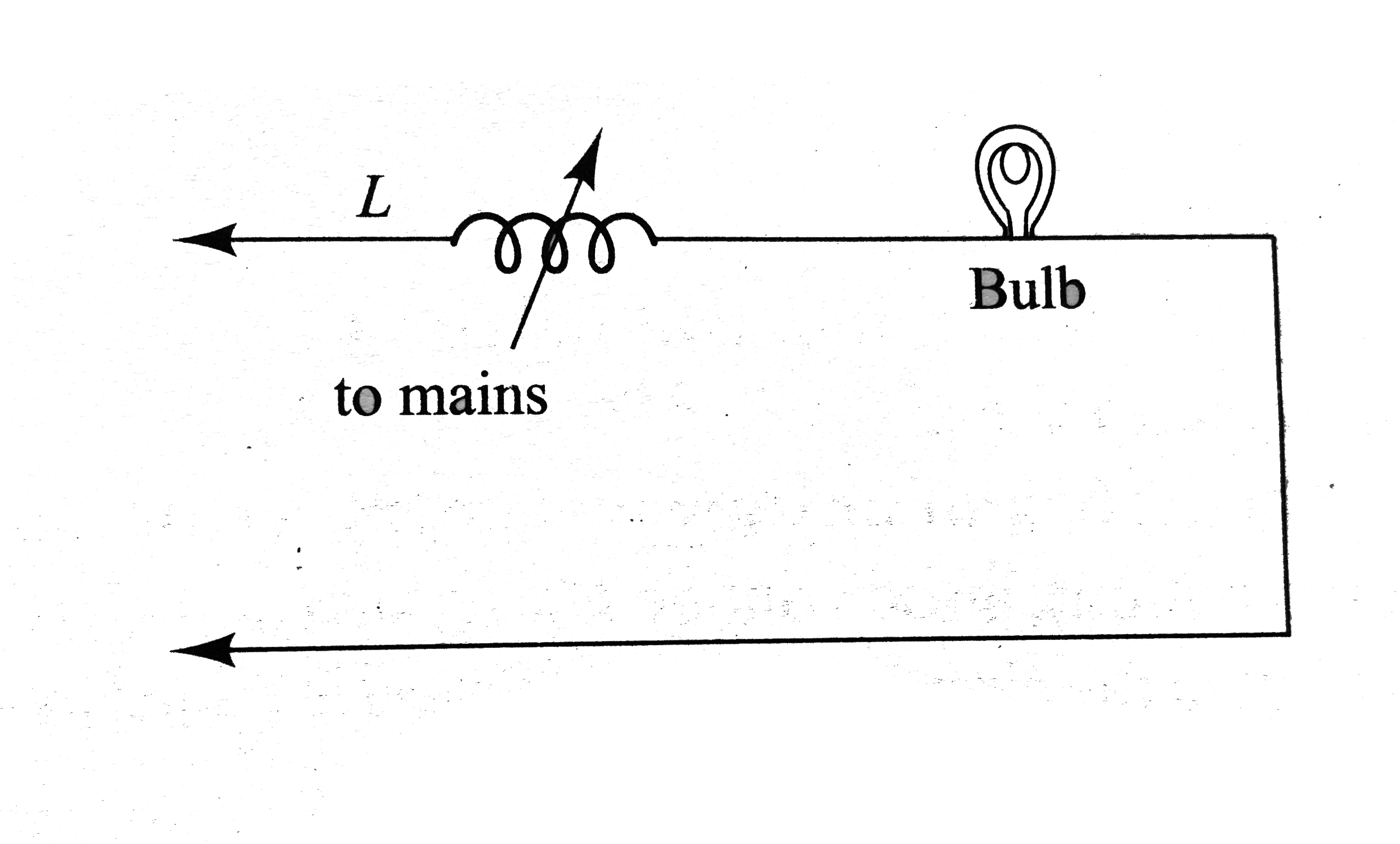A typical light dimmer used to dim the stage lights in a theater consists of a variable induction for L (where inductance is adjustable between zero and Lmax) conneced in series with a light bulb B as shown in fig. the mains electrical supply is 220 V at 50 Hz, the light bulb is rated at 220 V, 1100 W. What (Lmax) is required if the rate of energy dissipated in the light blub is to be varied by a factor of 5 from its upper limits of 1100 W?

(A) 0.69H
(B) 0.28 H
(C) 0.38 H
(D 0.56 H
The correct Answer is:B
Resistance of bulb: R=V20P0=(220)21100=44Ω
when L is amximum, power consumed will be minimum which is P=11005=220W
Now P=I2vR⇒220=I2v×44⇒(IV)=√5A
(IV)=EVZ⇒√5=220√442+X2L⇒XL=88Ω
⇒2πfLmax=88⇒2×227×50Lmax=88
Lmax=0.28H.
Topper's Solved these Questions
- ALTERNATING CURRENTBOOK - CENGAGE PHYSICS ENGLISHCHAPTER - ALTERNATING CURRENTEXERCISE - Exercises Multiple Correct
5 Videos
- ALTERNATING CURRENTBOOK - CENGAGE PHYSICS ENGLISHCHAPTER - ALTERNATING CURRENTEXERCISE - Exercises Assertion-reasoning
7 Videos
- ALTERNATING CURRENTBOOK - CENGAGE PHYSICS ENGLISHCHAPTER - ALTERNATING CURRENTEXERCISE - Exercises Subjective
15 Videos
- ATOMIC PHYSICSBOOK - CENGAGE PHYSICS ENGLISHCHAPTER - ATOMIC PHYSICSEXERCISE - ddp.4.3
15 Videos
Similar Questions
Knowledge Check
A light bulb is rated at 100 W for a 220 V ac supply . The resistance of the bulb is
A284ΩB384ΩC484ΩD584Ω
An electric bulb is rated 220Vand100W. When it is operated on 110V, the power consumed will be :
View SolutionThree 60 W, 120 V light bulbs are connected across a 120 V source as shown in figure. The total power dissipation in the three bulbs are
View SolutionA coil of self-inductance L is connected in series with a bulb B and an AC source. Brightness of the bulb decreases when
View SolutionA bulb is rated at 100V, 100W. It can be treated as a resistor. Find out the inductance of an inductor (called choke coil) that should be connected in series with the bulb at its rated power with the help of an ac source of 200V and 50Hz.
View SolutionThe number of photons emitted by a 60 W bulb per second, if 10% of the electrical energy supplied to an incandescent light bulb is radiated as visible light, is
View SolutionA light bulb is rated 200 W for 220 V supply at 50 Hz. Calculate resistance of the bulb and rms current through the bulb.
View SolutionA light bulb has the rating 200 W 220 V.
If the supply voltage is 200 V, then find power consumed by the bulb.
View Solution
